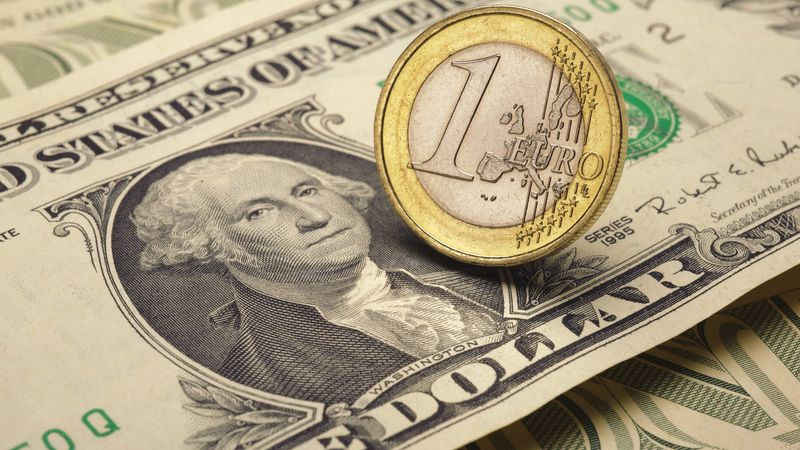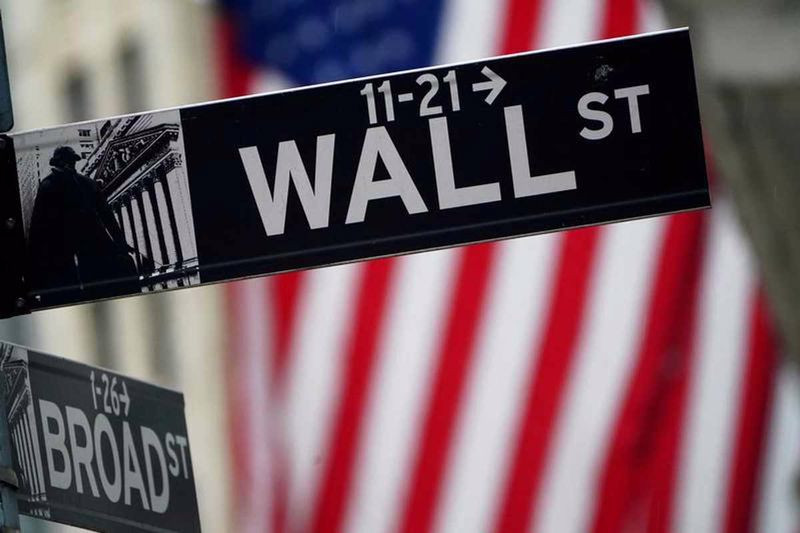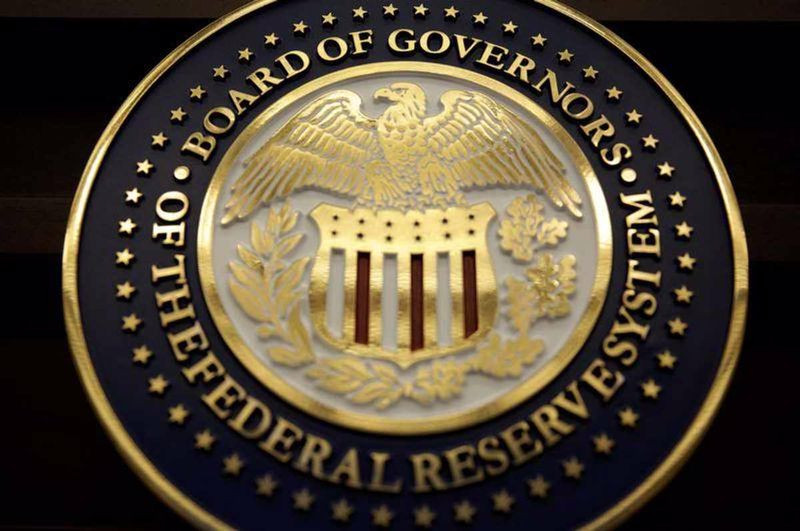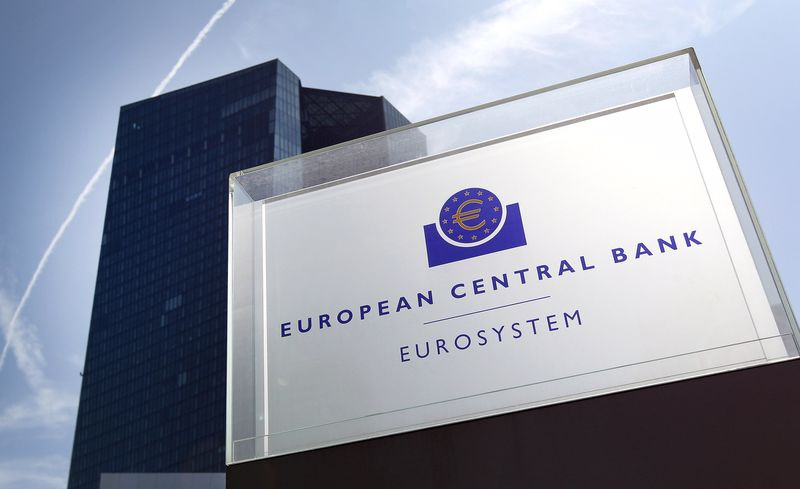
Previously, in conditions of low inflation, the leading central banks turned a blind eye to the devaluation of their own currencies. However, now that inflation in many developed countries is beating long-term, or even historical records, priorities are changing, and central banks are already interested in revaluing their own currencies.
With inflation rising everywhere, almost all central banks are raising interest rates fairly quickly. This means that countries where the central bank does not raise interest rates are experiencing and will continue to experience a sharp decline in their exchange rates, analysts at Natixis say.
Since the beginning of the year, the EUR/USD pair has sunk by about 7%.
At the same time, the current cycle of depreciation of the euro against the US dollar began in January 2021 from $ 1.2350.
The main reason for the decline over the past year and a half was the difference in interest rates in the United States and the euro area.
Having reached a five-year low of $1.0348 on May 13, the single currency bounced cheerfully.
The EUR/USD pair spent the next three weeks in the range of 1.0630–1.0790, as traders put into quotes the probability that the peak of inflation in the US has passed, and the Fed will not have to raise rates more actively.
However, in fact, events went according to a different scenario.
In May, inflation in the United States, contrary to expectations, did not slow down, but accelerated.
The consumer price index in annual terms was 8.6%, and the base CPI was 6%.These data disappointed market participants so much that in just a couple of sessions, the key Wall Street indexes erased all growth for the month, and the S&P 500 entered bearish territory.

"The data on inflation in the United States radically changed the situation, and the markets reacted accordingly, realizing that the Federal Reserve would have to act," analysts at BNY Mellon said.
And the US central bank did not take long to wait.
On June 15, the Fed raised rates by 0.75% for the first time since 1994 and confirmed its determination to curb inflation and restore price stability at all costs.
As a result, the greenback rose above 105.70, reaching the levels it last visited in December 2002.
At the same time, the EUR/USD pair shifted to the range of 1.0380-1.0600.
The euro stopped falling a few steps from a five-year low. Then the single currency was able to reduce losses somewhat.
On Monday, the EUR/USD pair recovered above the 1.0500 mark. With an empty economic calendar on both sides of the Atlantic, the pair traded under the influence of the dynamics of the dollar, which tried in vain to find bulls in a risk-prone environment.
The markets played back the comments of US Treasury Secretary Janet Yellen, who on Sunday said that a recession in the country is neither impending nor inevitable.
European Central Bank President Christine Lagarde spoke in a similar vein on Monday.
She said that a recession in the eurozone is not a baseline scenario.
Tracking the positive sentiment in the ranks of investors, the protective greenback finished the first day of the week in negative territory, around 104.20.
Taking advantage of the weakening demand for the dollar, the EUR/USD pair ended yesterday's session with an increase of almost 0.2%, in the area of 1.0510.

Risk appetite continued to dominate financial markets on Tuesday.
Wall Street returned from a long weekend in high spirits.
The main US stock indexes are growing by an average of 2-3% today.
However, experts express doubts about the prospects for a steady growth of stocks, given that high inflation combined with tightening financial conditions will eventually lead to a recession.
Although the fall in US stocks this year has made them more fairly valued, the S&P 500 index should fall by another 15-20% to about 3,000 points for the market to fully reflect the scale of the expected economic downturn, Morgan Stanley strategists say.
"The bear market will not end until the recession comes or its risk is eliminated," they said.
A similar point of view is held by Goldman Sachs analysts.
"Stock prices rose assuming only moderate recession risks, and now, as expectations of an economic downturn have intensified, stocks may catch up with these pessimistic expectations," they noted.
"If the base scenario of the market becomes a full–scale recession, the S&P 500 could reach the "bottom" of about 2,900 index points, which is more than 21% below its current levels," the analysts added.
Experts interviewed recently by The Wall Street Journal estimated the probability of a recession in the United States over the next 12 months at 44%.
High inflation, problems in supply chains, as well as price shocks in commodity markets caused by the conflict in Ukraine appear as the reasons for the potential economic downturn.
The majority of respondents consider it increasingly unlikely that the Fed will be able to quickly "cool" inflation by raising the rate, without provoking, at the same time, an increase in unemployment and a recession.
"If the market is afraid of the risks of a recession in the United States, then it should buy the dollar, not sell it. This opinion is based on historical data on the dynamics of USD during the downward phase of economic cycles in America," HSBC strategists said.

The Fed has already made it clear that it will tighten policy as much as necessary to bring inflation back to the 2% target from the current 40-year high.
The message from many FOMC officials is that the central bank is ready to significantly raise rates to restrictive territory, and if the price of this is a period of slowing growth, so be it.
"The Federal Open Market Committee has taken another important step in bringing inflation closer to the target level by raising the federal funds rate by 75 basis points. If the data meets my expectations, I will support a similar decision during the July meeting. The Fed is ready to go all-in to restore price stability," said Christopher Waller, a member of the Fed's Board of Governors.
On Tuesday, the USD index sank to a local low around 103.75, after which it rose again above 104.00.
The next descending barrier appears at the level of 102.50 (55-day moving average), followed by 101.30 (monthly low of May 30), and then 100.25 (100-day moving average).On the other hand, a breakthrough above 105.78 (the 2022 high of June 15) will open the door to 107.30 (the monthly high of December 2002) and finally 108.75 (the peak of October 2002).
The Fed raised its discount rate by 75 basis points in June to a range of 1.5-1.75%.
However, this does not necessarily mark a turning point for the foreign exchange market or even risk sentiment in general, TD Securities notes.
"We still believe that the FOMC wants to reach its long-term neutral rate fairly quickly in conditions of still steady demand and an unbalanced labor market. We expect them to do so with another 75bp rate hike next month. Although the central bank remains largely dependent on data, we do not think that the inflation data will give them any respite in the short term," the bank's economists said.
"It is obvious that the Fed is trying to buy optionality, more explicitly linking the size of increases with the base monthly CPI. We are likely to see a slight retreat of the US dollar, but it is premature to strategically sell the US currency, given that the outlook for core inflation is still alarming," they added.
The USD index remains near the highs of 2022, according to ING analysts.
"The United States may consider introducing temporary fuel tax holidays. Let's see how this story will develop and what amount of fiscal stimulus it will present. This could be another factor supporting the dollar at high levels this summer," they said.
"As for the EUR/USD pair, trading at 1.0500, it does not look particularly cheap, based on our medium-term fair value models – and may go below the parity level with further deterioration of conditions," ING said.
The Fed has already admitted that it made a mistake in estimating inflation and this mistake will have to be corrected. After the central bank's June meeting, Fed Chairman Jerome Powell said that inflation in the US is really extremely high. And FOMC officials will now make every effort to reduce it.

But the ECB is still slow. Last week, the central bank even called an emergency meeting to discuss the situation on the markets, but did not dare to raise the rate.
Meanwhile, the situation in European countries is becoming more acute every day. In the eurozone, according to the latest data, annual inflation has reached 8.1%. At the same time, it was 7.4% in April.
Energy prices in the EU, as of May, jumped by 39.2% compared to the same period last year. Food products are noticeably more expensive (by 7.5% year-on-year), industrial goods (by 4.2%) and services (by 3.5%).
The ECB still promised to raise the rate, but a little later – in July and only by 25 basis points.
By that time, inflation in the eurozone may still rise, and it is already four times higher than the ECB's target level of 2%.
At the same time, the ECB cannot raise rates as actively as the Fed does.
Earlier, ECB President Christine Lagarde has repeatedly stated that the pace of monetary policy tightening in Europe will be slower than in the United States, due to different situations in the economies of the United States and the eurozone.
In addition, there are fears that the belated tightening of monetary policy will increase the gap between interest rates on bonds of various countries of the currency bloc, fragmenting the regional public debt market.
At an emergency meeting last week, the ECB asked the relevant committees to accelerate the development of a tool to combat fragmentation after a sharp increase in spreads between Southern European and German bond yields.
In addition, the territorial proximity of the European region to the conflict zone in Ukraine and its dependence on energy imports from Russia make it very vulnerable to the consequences of the conflict and the potential shutdown of Russian gas supplies.
"If there is a sudden cessation of Russian gas supplies, the probability that the recession will come earlier will be much higher. There is no doubt about it," said Christian Sewing, CEO of Deutsche Bank.
"The economic situation in the eurozone raises concerns. But there would be more risks if the central bank did nothing. The faltering eurozone economy can be tightened again by a softer policy if the recession turns out to be deeper than required to contain inflation. On the contrary, the loss of confidence in the ability of the authorities to control prices will require significant costs. European economies will be miserable in the coming months. Incomes will shrink, a recession is likely to come, and interest rates will have to be raised, which will increase pressure on households and families. It will be difficult," writes Financial Times columnist Chris Giles.
Thus, there is reason to believe that the weakness of the euro against the dollar will remain for the time being.
Therefore, any decline in the USD – even potentially deeper – can be considered as a convenient opportunity to buy the US currency.
Although the EUR/USD pair has been trading in positive territory for the second day, it is still in a downward trend, and short positions on growth remain a priority.
Impending fragmentation and recession risks in the eurozone limit the euro's attempts to develop an upward momentum.
The initial resistance for EUR/USD is located at 1.0585 (200-day moving average) on the way to 1.0600 (61.8% Fibonacci retracement level). In case of a breakthrough of this level, the pair may head to 1.0660.
On the other hand, the nearest support is at 1,0500 (50-day moving average). Next, the bears may target 1.0460 and 1.0420.
 English
English 
 Русский
Русский Bahasa Indonesia
Bahasa Indonesia Bahasa Malay
Bahasa Malay ไทย
ไทย Español
Español Deutsch
Deutsch Български
Български Français
Français Tiếng Việt
Tiếng Việt 中文
中文 বাংলা
বাংলা हिन्दी
हिन्दी Čeština
Čeština Українська
Українська Română
Română

